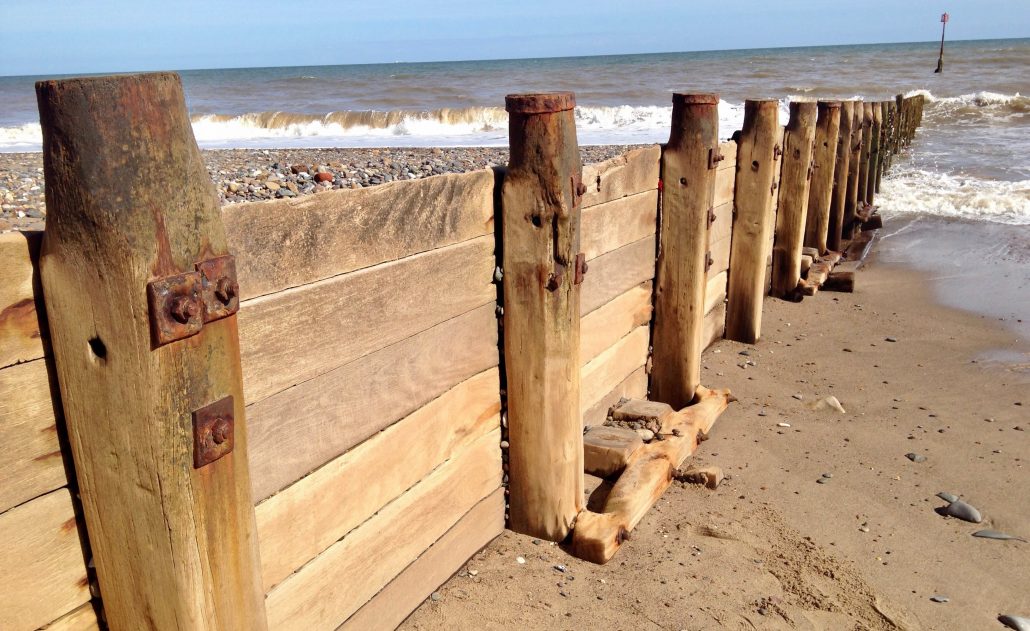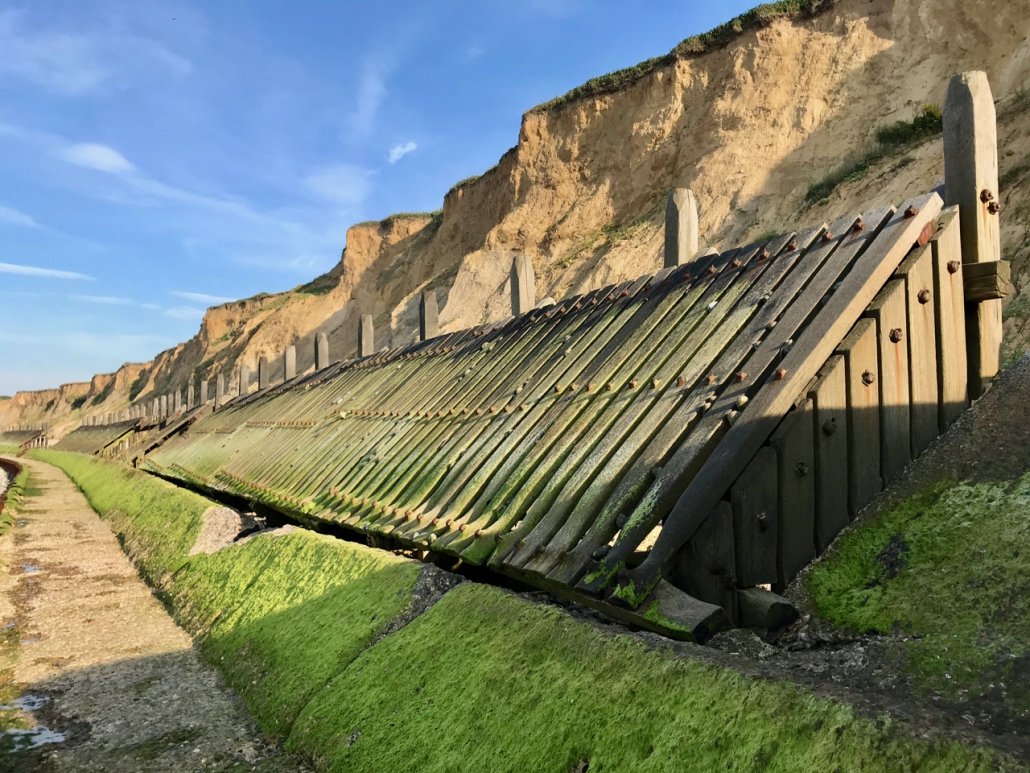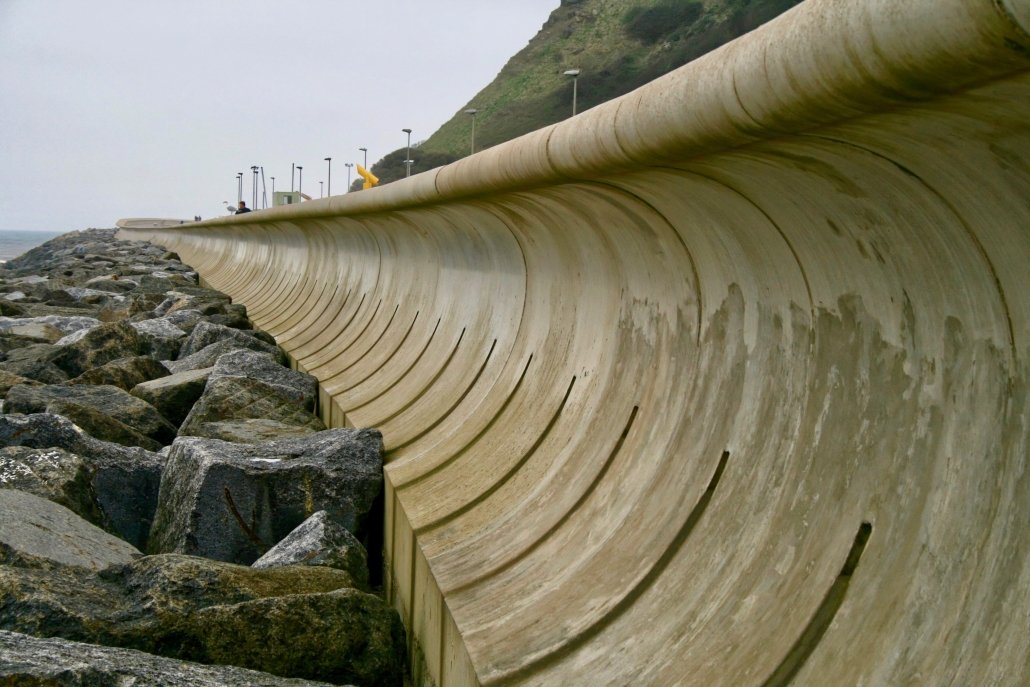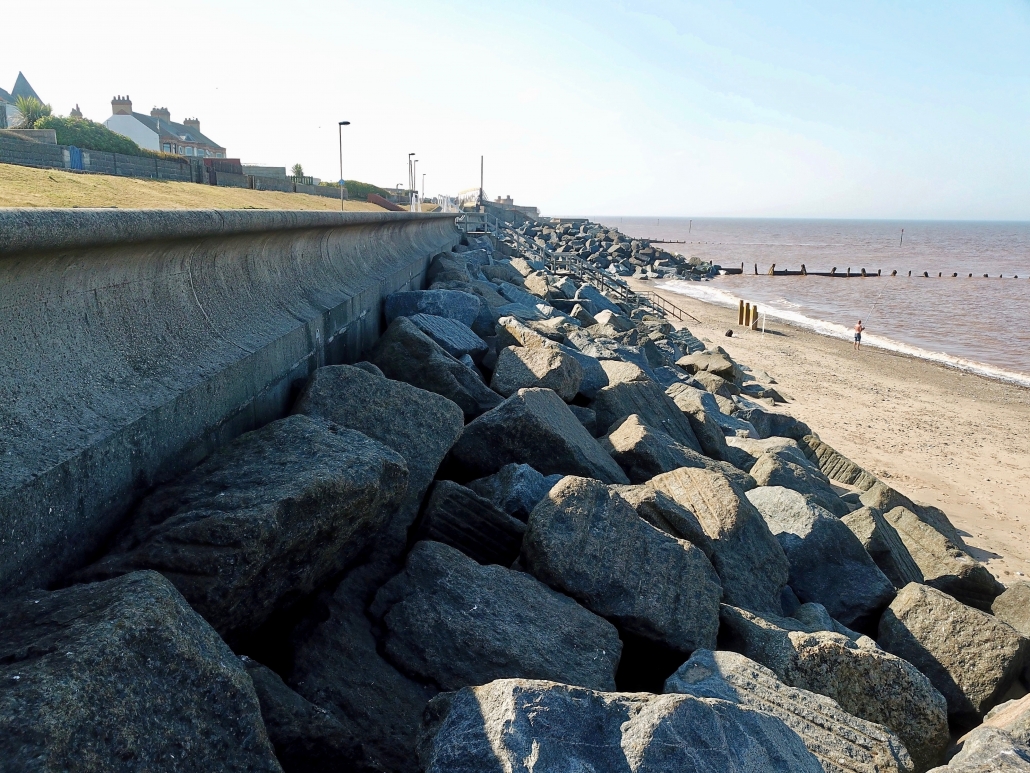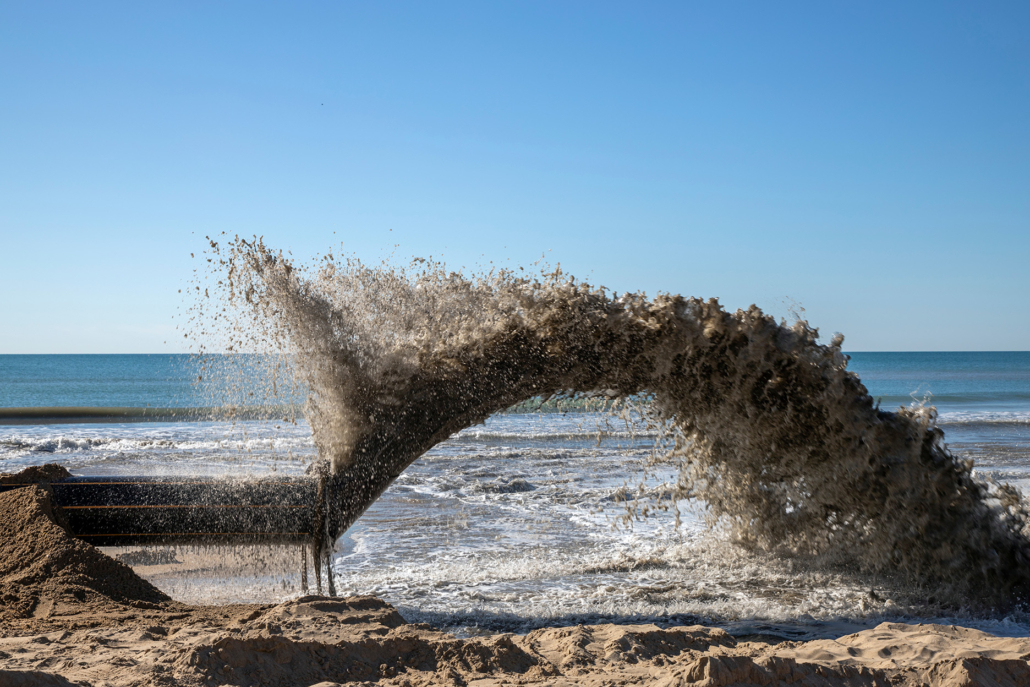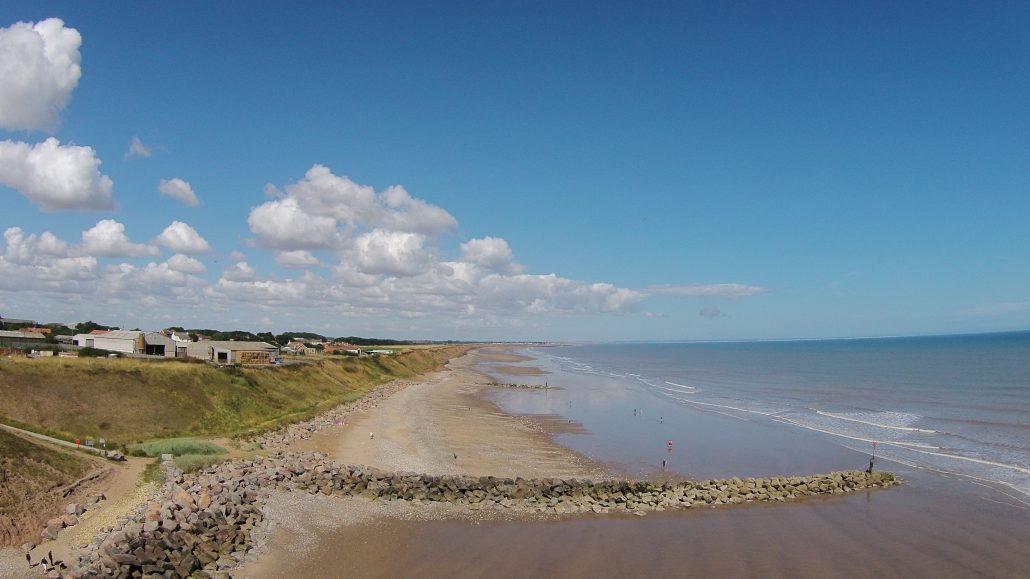Coastal Management Strategies
Shoreline Management Plans (SMPs)
SMPs aim to safeguard a coastline segment without creating issues elsewhere. The coast is divided into natural units, or sediment cells, where local governments determine the best coastal management approach. Some areas may be permitted to erode while others receive protection.
Integrated Coastal Zone Management (ICZM)
ICZM seeks to manage all aspects of a coastal system, including marine areas, land, human activity, and economic interests. It aims to balance coastline protection and its people and economy utilisation. ICZM acknowledges the interdependence of marine and land systems, varying stakeholders, and different scales of importance, from local to national.
Hard Engineering Coastal Management
Hard engineering techniques like groynes, sea walls, revetments, rock armour, and cliff drains aim to modify natural processes to lessen coastal erosion potential. These measures might occasionally have unintended effects, for example, constructing groynes might decrease erosion in one location but increase it further along the coast because sediment is trapped. Sea walls could also lead to seabed scouring.
Groynes
Outline: Groynes are barriers or walls built perpendicular to the shoreline, extending from the beach into the water. They trap sediment moving with longshore drift, helping to build up the beach.
Advantages:
- Help build up the beach, providing additional recreation space.
- Reduce coastal erosion locally.
Disadvantages:
- Can cause increased erosion further down the coastline as they interrupt the natural sediment movement.
- May be visually unappealing.
Revetments
Outline: Revetments are sloping structures made from concrete, rocks, or other materials, placed on banks or cliffs. They absorb and deflect wave energy.
Advantages:
- Reduce wave energy and prevent erosion.
- Can blend with the natural environment if constructed with rocks or similar materials.
Disadvantages:
- Can be expensive to build and maintain.
- May disrupt the natural coastal processes.
Sea Walls
Outline: Sea walls are large, solid barriers constructed parallel to the shoreline. They are designed to absorb wave energy and prevent erosion.
Advantages:
- Provide strong protection against storms and high waves.
- Often have walkways for people, adding recreational value.
Disadvantages:
- Extremely expensive to build and maintain.
- Can cause scouring of the seabed and reflect wave energy, leading to erosion at the base.
Gabions
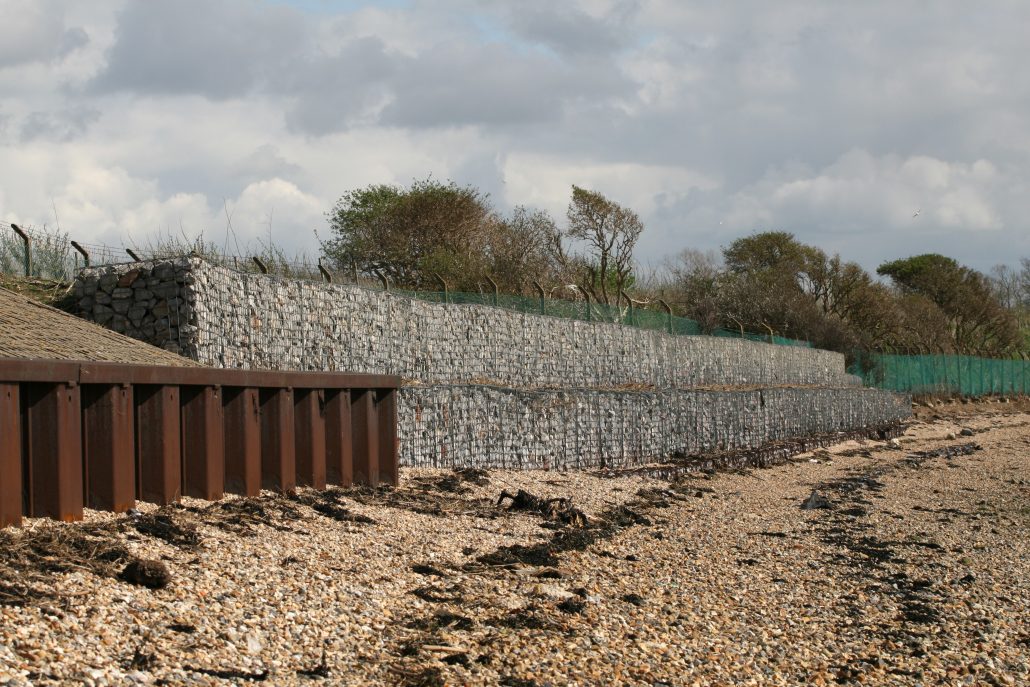
Coastal erosion defences in the form of interlocking concrete blocks in the foreground and stone-filled wired gabion baskets behind
Outline: Gabions are wire cages filled with rocks or other hard materials. They absorb and deflect wave energy, often used with other coastal protection measures.
Advantages:
- Relatively cheap and easy to construct.
- Can be used in various configurations to suit specific needs.
Disadvantages:
- Wire cages may corrode over time, leading to failure.
- Can be visually intrusive in a natural landscape.
Riprap (Rock Armour)
Outline: Riprap, or rock armour, involves the placement of large, interlocking boulders or rocks along the shoreline. It serves to absorb and deflect wave energy, reducing erosion.
Advantages:
- Durable and requires little maintenance.
- Often blends well with the natural environment.
Disadvantages:
- Can be costly to transport the necessary materials.
- May interfere with natural coastal processes and habitats.
Hard engineering strategies provide vital protection against coastal erosion and flooding. However, they often come with considerable costs and may disrupt natural processes and ecosystems. The effectiveness of these strategies can depend on various factors, including the specific needs and characteristics of the location, so a careful assessment and a combination of methods might be needed to ensure the best results.
Soft Engineering Coastal Management
Soft engineering works in tandem with nature. This approach includes maintaining mangrove forests to mitigate tropical storm impacts or beach nourishment to enlarge a beach using sediment from other locations. Some soft engineering allows the coastline to retreat naturally. Managed retreat, for example, permits natural processes to unfold – erosion in some places, deposition in others. This approach can be cost-effective and foster natural environments but might lead to losing homes or farms to the sea.
Beach Replenishment (Beach Nourishment)
Outline: Beach replenishment involves importing and depositing sand or other sediments from elsewhere to restore a beach that has been eroded.
Advantages:
- Enhances the appearance and recreational use of the beach.
- Provides a buffer from storm waves and flooding.
Disadvantages:
- Often temporary, requiring repeated application.
- Can be expensive and may impact the source area from which the sand is taken.
Cliff Regrading
Outline: Cliff regrading involves reshaping cliffs, reducing their slope, and making them more stable and less prone to landslides and erosion.
Advantages:
- Reduces the risk of landslides and erosion.
- Can be combined with revegetation for a more natural appearance.
Disadvantages:
- Can be expensive and time-consuming.
- May lead to the loss of habitats or geological interest sites.
Ecosystem Rehabilitation and Revegetation
Outline: This approach aims to restore degraded ecosystems by planting vegetation and restoring natural processes, improving both stability and biodiversity.
Advantages:
- Enhances the natural appearance and ecological value of the coast.
- Stabilizes soil, reducing erosion.
Disadvantages:
- Success depends on appropriate plant selection and ongoing maintenance.
- May be challenged by ongoing human activities or climate changes.
Managed Retreat
Outline: Managed retreat, also known as managed realignment, allows the shoreline to move naturally, relocating human activities and structures away from risk areas. This may include breaching existing coastal defences to allow natural processes to shape the land.
Advantages:
- Allows the development of natural habitats like salt marshes, which provide additional flood defence.
- Often more sustainable and cost-effective in the long term.
Disadvantages:
- May be unpopular with landowners, leading to social and legal challenges.
- Initial costs can be high, especially if infrastructure must be relocated.
Soft engineering coastal strategies provide more environmentally sensitive options for managing coastlines. They often aim to enhance or work with natural processes rather than trying to dominate them. While these strategies may be more sustainable and aesthetically pleasing, they often require a nuanced understanding of the local ecosystem and ongoing management to be effective. Choosing between soft and hard engineering strategies (or a combination of both) will depend on specific local needs, values, and conditions.

